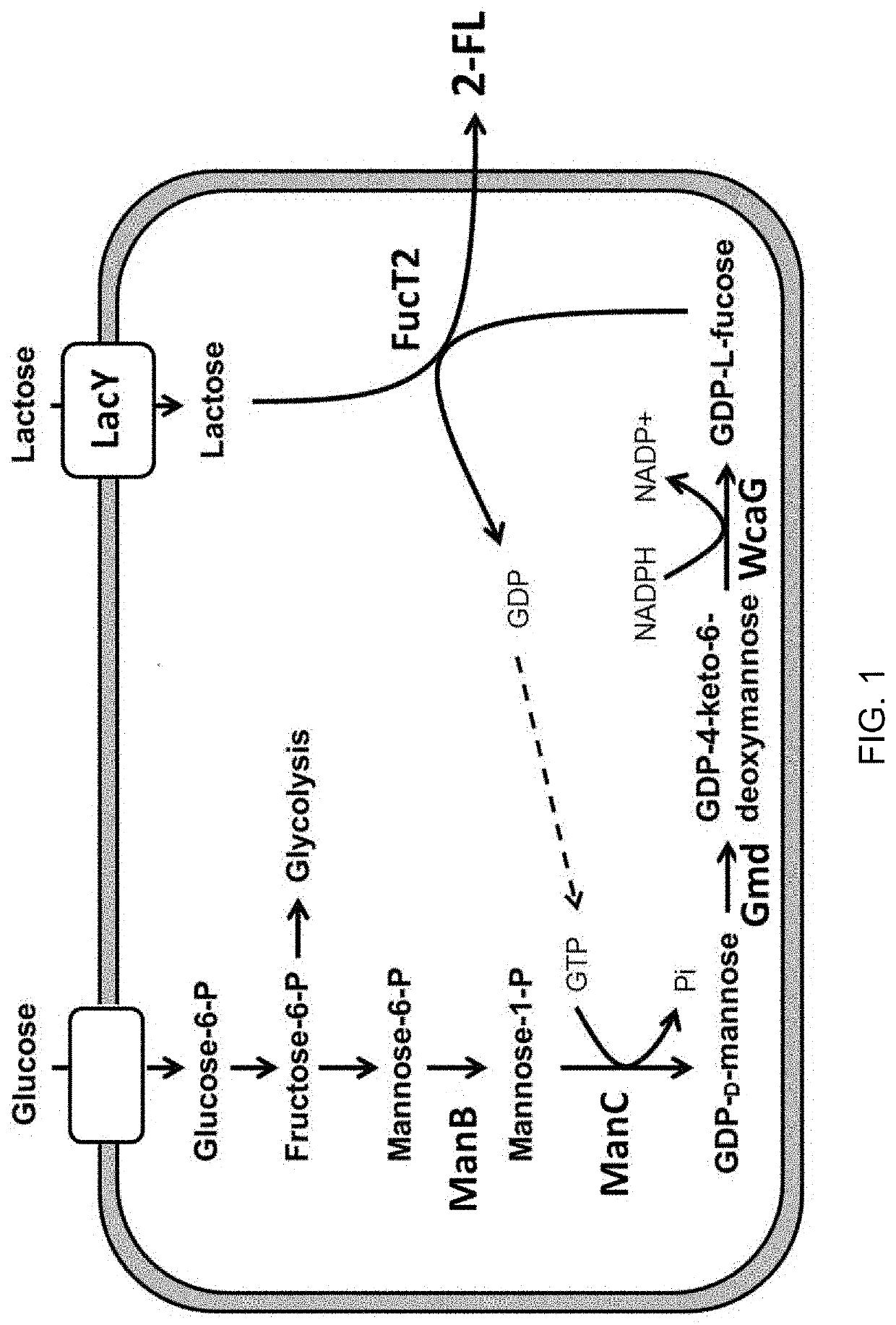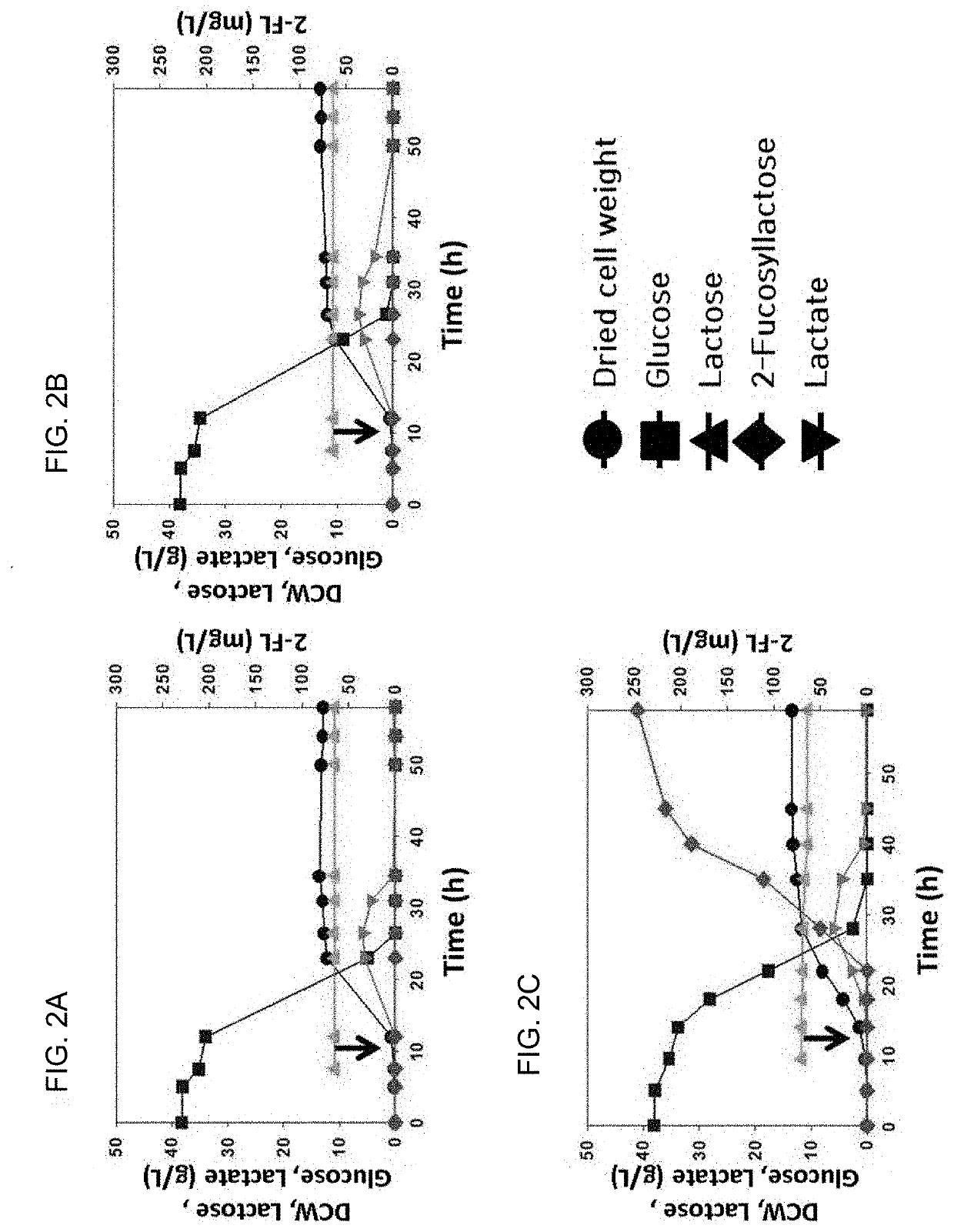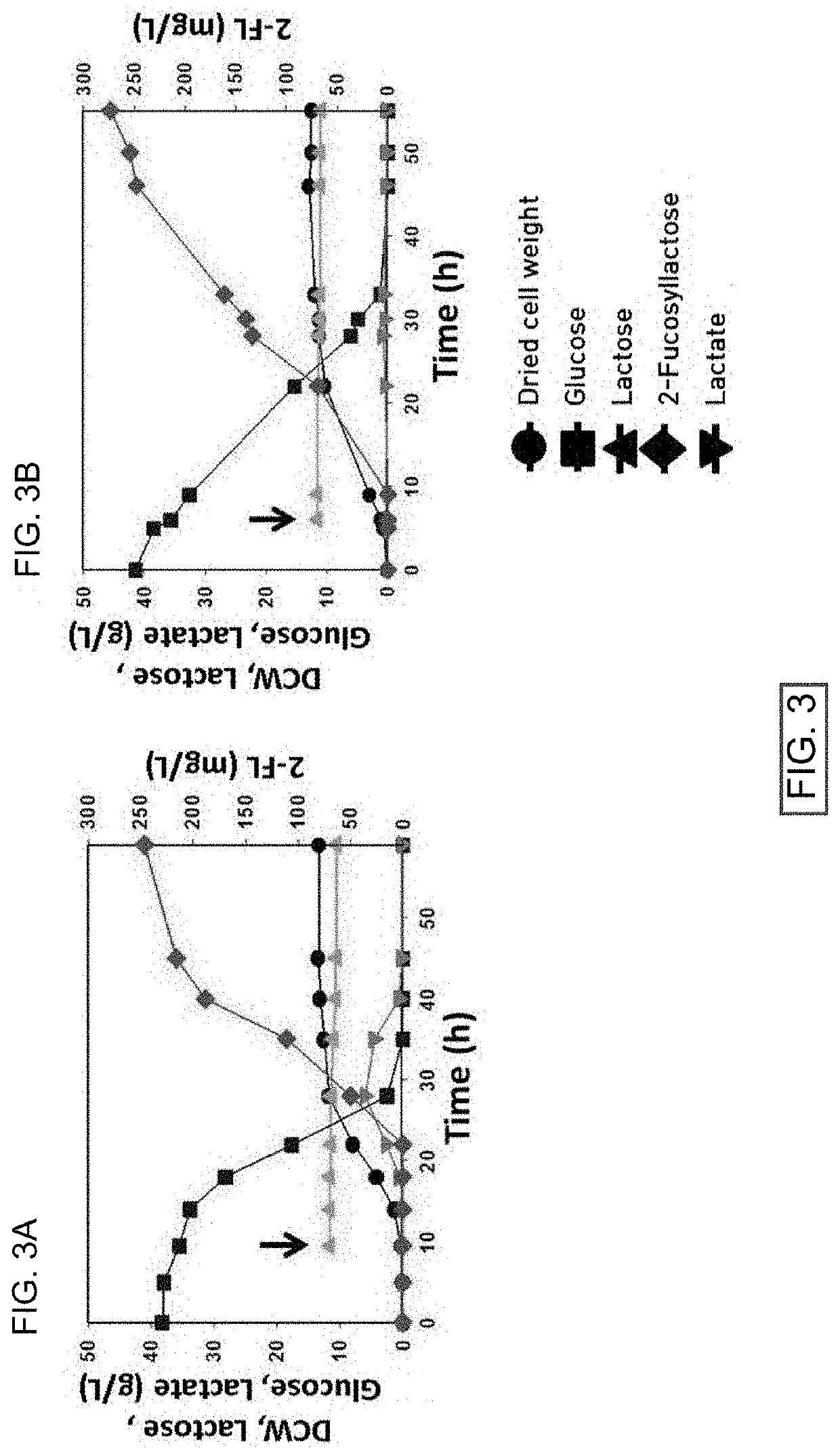Corynebacterium glutamicum for use in producing 2'-fucosyllactose
a technology of corynebacterium glutamicum and fucosyllactose, which is applied in the direction of lyase, transferase, peptides, etc., can solve the problems of low productivity, limited breast milk supply, and 20% of women's inability to synthesize fucosyllactose well
- Summary
- Abstract
- Description
- Claims
- Application Information
AI Technical Summary
Benefits of technology
Problems solved by technology
Method used
Image
Examples
example 3
tion of Concentrations of Cells and Metabolites
[0046]The dried cell weight was determined by multiplying the optical density (OD) by a pre-measured transmutation constant of 0.3. The optical density (OD) was adjusted to the range of 0.1 to 0.5 by diluting a sample at an appropriate level and absorbance at 600 nm was measured using a spectrophotometer (Ultrospec 2000, Amersham Pharmacia Biotech, USA).
[0047]The concentrations of 2′-fucosyllactose, lactose, lactate, glucose and acetic acid were measured using a high-performance liquid chromatography (HPLC) device (Agilent 1100LC, USA) equipped with a carbohydrate analysis column (Rezex ROA-organic acid, Phenomenex, USA) and a refractive index (RI) detector. 20 μl of the culture medium diluted (×10) was analyzed using a column pre-heated at 60° C. 5 mM of a H2SO4 solution was used as a mobile phase at a flow rate of 0.6 mL / min.
Test Example 1: Identification of Incorporation of lacZ Genes-Removed Lac Operon (lacYA) on Production of 2′-Fu...
PUM
| Property | Measurement | Unit |
|---|---|---|
| concentration | aaaaa | aaaaa |
| concentrations | aaaaa | aaaaa |
| optical density | aaaaa | aaaaa |
Abstract
Description
Claims
Application Information
 Login to View More
Login to View More - R&D
- Intellectual Property
- Life Sciences
- Materials
- Tech Scout
- Unparalleled Data Quality
- Higher Quality Content
- 60% Fewer Hallucinations
Browse by: Latest US Patents, China's latest patents, Technical Efficacy Thesaurus, Application Domain, Technology Topic, Popular Technical Reports.
© 2025 PatSnap. All rights reserved.Legal|Privacy policy|Modern Slavery Act Transparency Statement|Sitemap|About US| Contact US: help@patsnap.com



